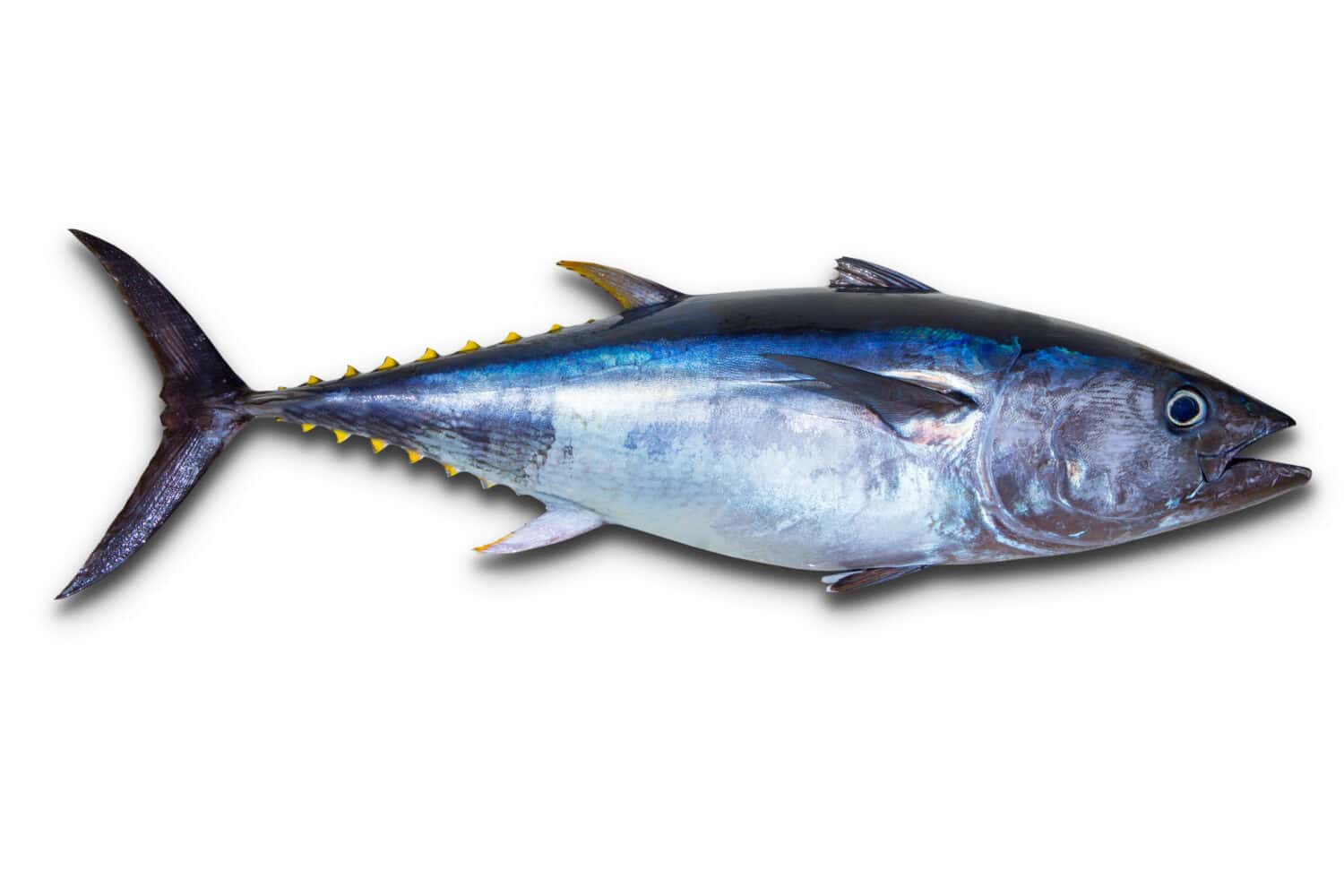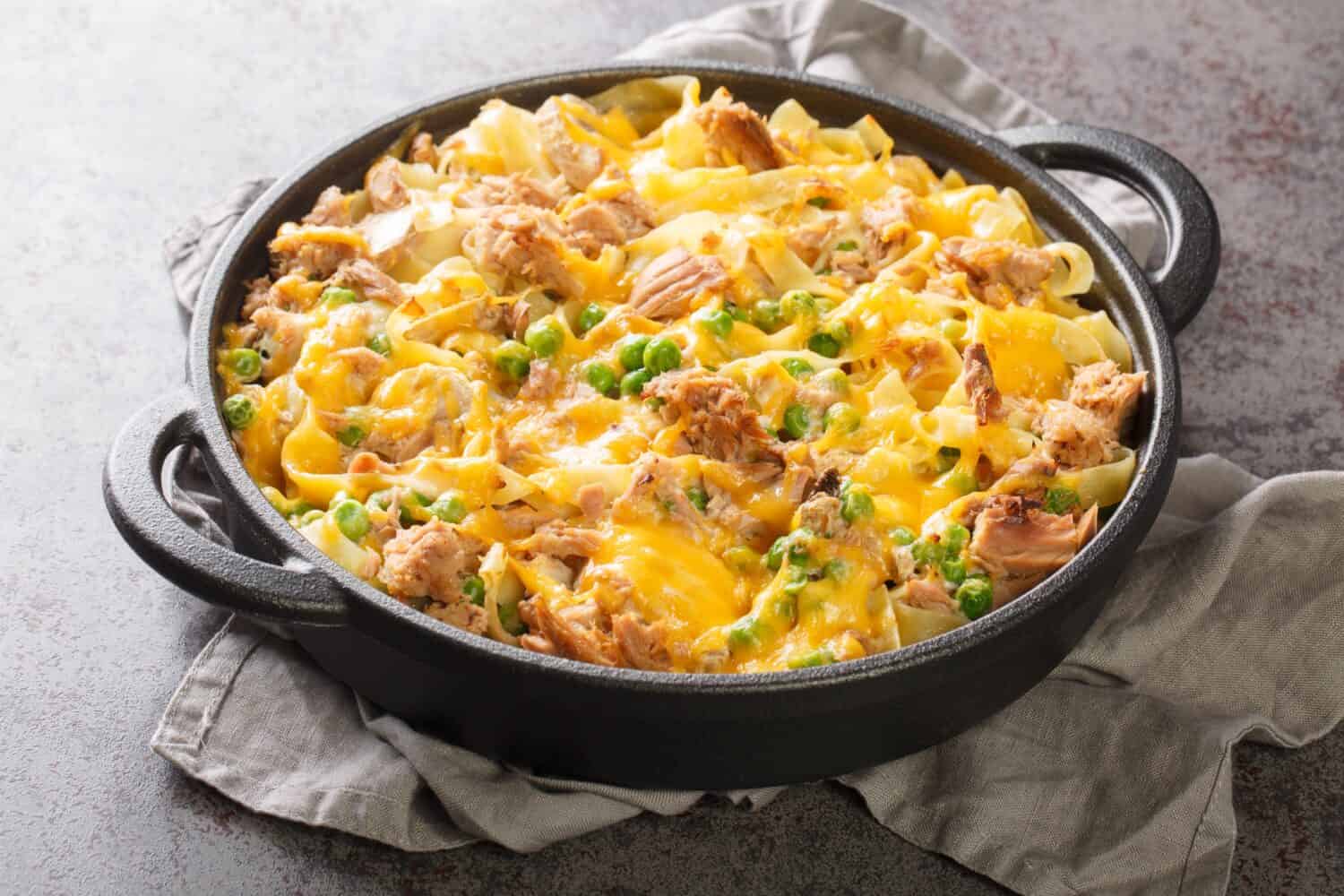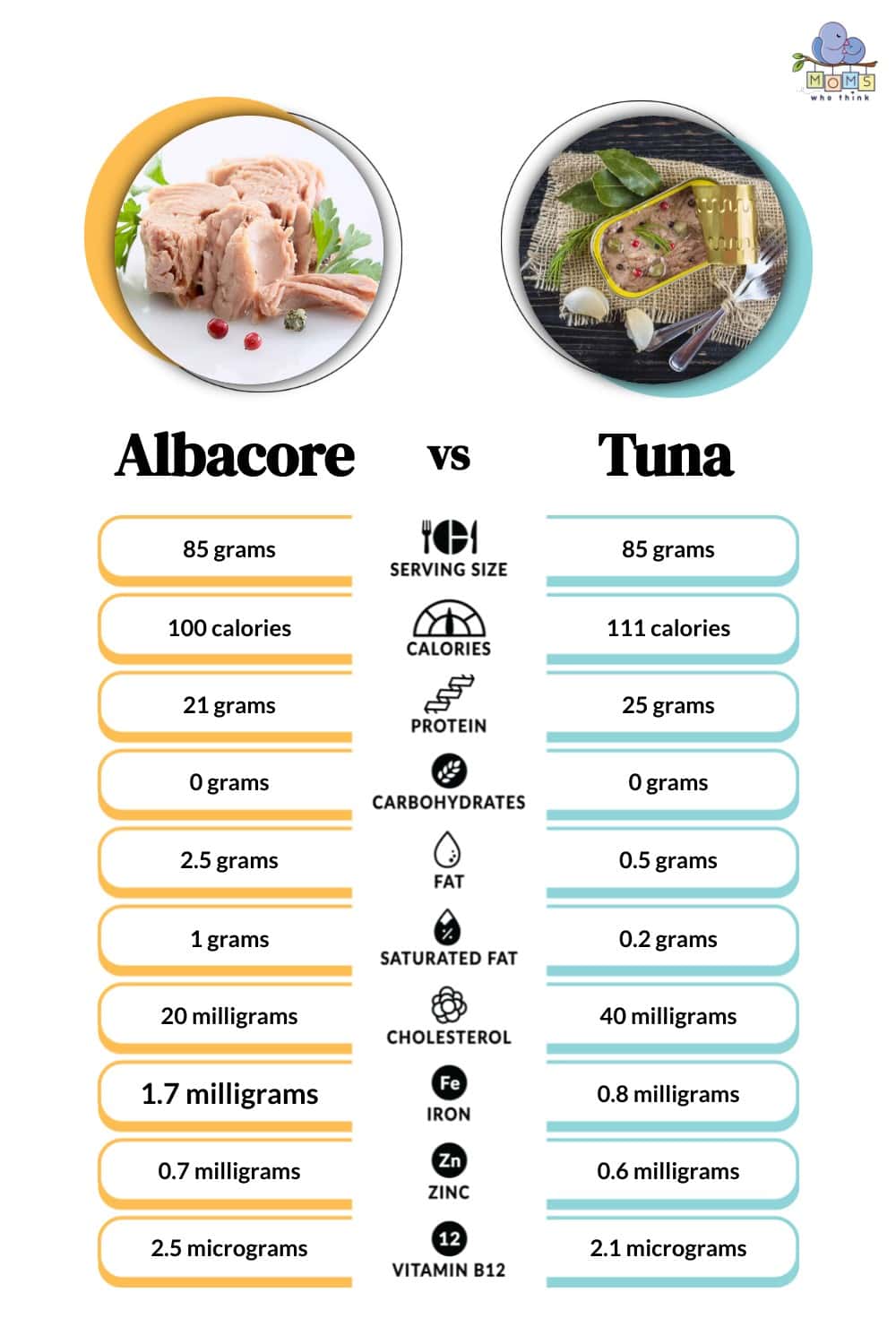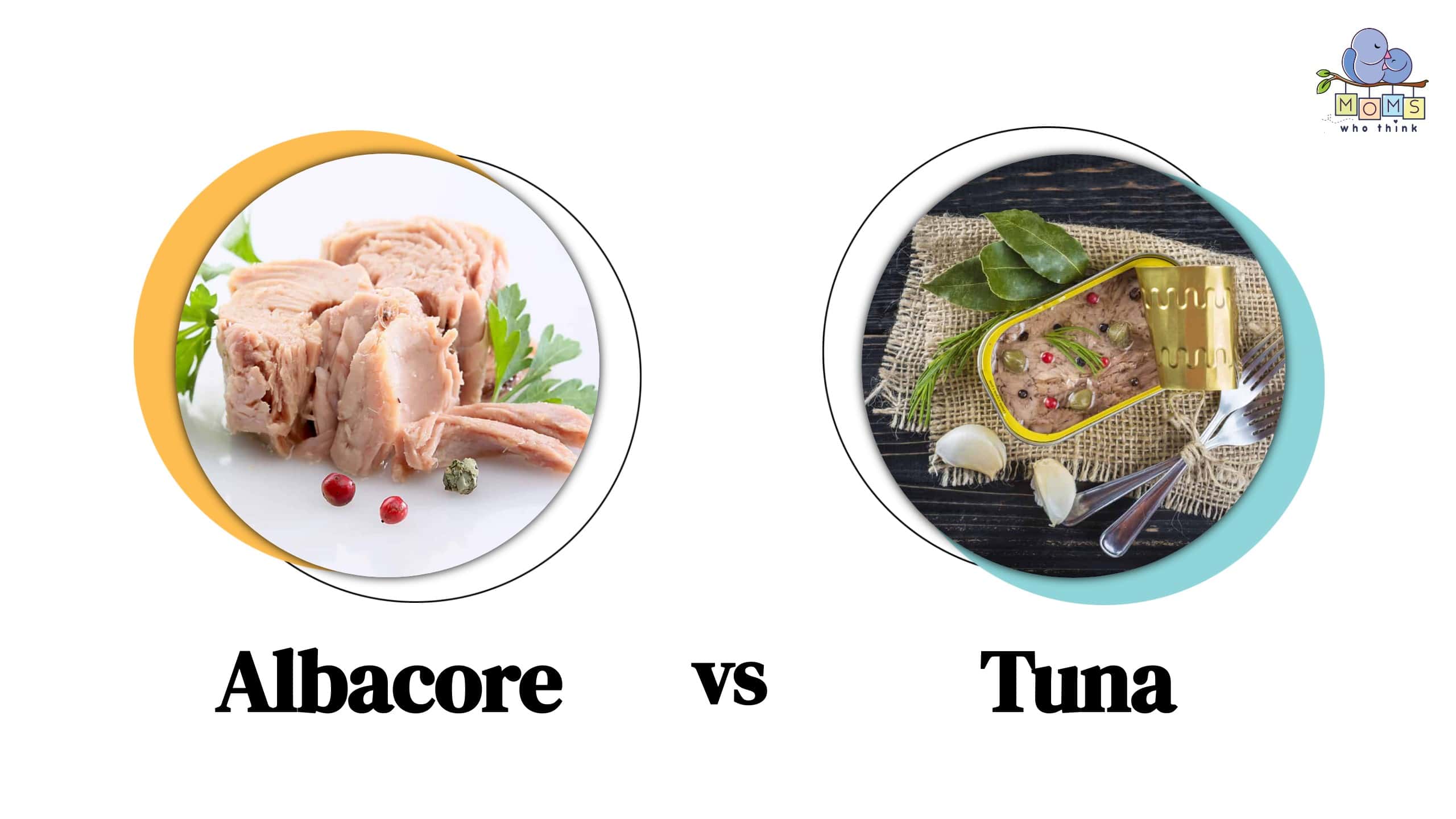While there are many types of tuna, what may come as a surprise to know is albacore is a specific type of tuna. However, what makes albacore different from other species of tuna is it is a larger size with a lighter colored flesh. It also has a firmer texture, milder flavor, and contains more nutrients than other tunas. This article goes into depth in highlighting key differences including which one tastes better, is healthier, and safer to help you make an informed choice between albacore vs. tuna. Are you ready? Let’s go!
Albacore vs. Tuna: Key Differences
Did you know? Tuna fish – including albacore – belong to a family called Scombridae or “Thunnini” the term biologists use. However, you might know it better as the “mackerel” family.

Tuna sandwiches are a household favorite for some!
©klaikungwon/Shutterstock.com
What is Albacore?
This type of tuna is sometimes called “White Tuna” because of its pale meat. People often use it in canned tuna or eat it in dishes like salads and sushi.
What is Tuna?
Tuna is a saltwater fish. There are about eight kinds of tuna that people catch for food – four are the most popular in American households. These include skipjack and bluefin tuna. But we will discuss these later. But first, you should know that these come in different sizes and each have their own distinctive tastes. And out of all the fish in the sea – tuna is one of the most consumed fish in the United States!
Albacore vs. Tuna: Species
Albacore
Albacore tuna is a type of fish that's a member of the mackerel family. They have a sleek, torpedo-like shape with smooth skin and fins that help them swim really fast. Their tops are dark blue, while their undersides can be grayish or silvery white. What's unique about them is their super long side fins, almost as long as their bodies, and their tail fins have a white edge. You can find them in warm and temperate oceans all over the world, and they like to swim near the surface in groups.
These tuna are oceanic, meaning they prefer deep, wide-open waters. They swim in schools and mainly eat other fish, shrimp, and squids.
Albacore tuna is one of the smallest tuna species, weighing around 80 pounds, just a bit bigger than skipjack tuna.
Tuna
There are 15 types of Thunnini, a group of amazing wild fish. They include albacore, bigeye, black skipjack, blackfin, bluefin (three kinds: Atlantic, Pacific, southern), bullet, frigate, kawakawa, little tunny, longtail, skipjack, slender, and yellowfin.
Tuna are impressive creatures. For example, the Atlantic bluefin can grow up to 10 feet long and weigh over 2000 pounds, which is heavier than a horse! Some tuna can swim incredibly fast, up to 43 miles per hour, thanks to their special body shape, fins, and scales. Tuna also travel long distances when they migrate. Unlike most other fish, they can keep their bodies warmer than the water around them.
Many tuna are around 35 inches (90 centimeters) long. The market mainly deals with four types: skipjack (more than half of all tuna caught globally), followed by yellowfin, bigeye, and albacore. The critically endangered bluefin tuna makes up only 1% of the global catch.
Albacore vs. Tuna: Taste and Texture
Albacore
This white fish is often considered the mildest in flavor among tuna species. The flavor is delicate and has a clean taste with a slightly sweet note to it. But the texture isn’t too dainty. It is a firm texture that presents itself more like a steak.
Tuna
There are four types of tuna that are in America’s market today:
Bluefin Tuna
Out of all the different types of tuna, bluefin tuna is one of the most flavorful and sought-after. Why? Maybe because of it’s robust, almost beef-like flavor. Or it could bluefin’s high fat content that gives it a rich, buttery taste. It’s sort of like a melt-in-the-mouth texture!
Yellowfin Tuna
This has a slightly stronger flavor compared to albacore. It's often described as meaty and mild, with a slightly nutty or buttery undertone. The texture is firmer than albacore but not as firm as bluefin.

Bluefin tuna has a rich buttery flavor!
©lunamarina/Shutterstock.com
Bigeye Tuna
Compared to albacore and yellowfin the flavor is described as richer with a pretty firm texture. This makes sense as most people describe it as with a flavor similar to beef or red meat.
Skipjack tuna
When you bite into skipjack tuna, you can immediately taste the “fishy”, slightly “gamey” flavor. Although it has a flaky and softer texture than other tuna species, the flavor is definitely stronger and more pronounced compared to albacore.
Note:
When you see a “chunk light” tuna can, you can be almost certain you’re getting skipjack, yellowfin, or big-eye tuna, according to Bumblebee Seafood. On the other hand, albacore are chunkier, larger, and solid pieces of tuna in a can and include the words “solid white” or “chunk white”.
Albacore vs. Tuna: Ways to Prepare
There are a variety of ways to prepare both albacore and the other types of tuna mentioned above. This is mainly due to its wide variety of delicious flavors and range of textures from oily, buttery to flaky.
You can create tasty meals – from breakfast to dinner – using either freshly caught tuna or from a can.
One popular way is to have it raw in dishes like sushi and sashimi. You can also grill tuna steaks. Another option is to sear tuna quickly, keeping the inside rare while creating a flavorful crust on the outside. Tuna can even be used in casseroles, like tuna noodle casserole with pasta and creamy sauce. You can make tuna patties for burgers or enjoy it marinated as tuna poke. And if you like tangy flavors, try tuna ceviche, where raw tuna is “cooked” in citrus juices.
All in all, there are endless ways to have a meal that includes tuna. And perhaps you – like so many – enjoy keeping it simple and having tuna in a salad, sandwich, or wrap!
Albacore vs. Tuna: Which is Healthier
All tuna, including albacore, are a good source of protein and provide essential nutrients such as vitamin D, selenium and omega-3 fats. These nutrients support heart, bone and immune health.
Albacore vs. Tuna: Is Canned Better or Fresh?
If you’re on a budget, it’s easier and cheaper to buy a can of tuna, pop it open and turn it into a salad or sandwich. But here’s what you should know about albacore vs. tuna:

Tuna casseroles are quick, easy and nutritious!
©AS Foodstudio/Shutterstock.com
According to the Environmental Defense Fund, mercury levels in canned white tuna, which is exclusively albacore, are almost three times higher than those found in smaller skipjack tuna commonly used in canned light tuna products. This is especially important information for pregnant women and young children as this can be harmful to their health.
There is also concern of the level of sodium in canned tuna.
On the other hand, while fresh tuna is not as convenient as canned, it offers lots of health benefits. It is higher in fatty acids, and is full of protein, omega-3 fats, and essential vitamins. But here’s what takes fresh tuna to the next level: When you cook it at home, you have control over how it's made and the amount of salt, thus taking charge of your sodium intake.
Note:
Some types of fresh tuna, especially the big ones like bluefin, can have higher levels of mercury.
Albacore vs. Tuna: Nutritional Value

Final Thoughts
Albacore is a specific type of tuna, known for its mild flavor, light-colored flesh, and use in canned tuna products. Tuna, in general, is a broad term that encompasses various species, with albacore being one of them. Albacore tuna is often called “White Tuna” and has a firm texture. Tuna, including albacore, is a good source of protein and omega-3 fatty acids, which are beneficial for heart health. When choosing tuna, it's important to consider mercury levels, with smaller tuna species like skipjack being lower in mercury and thus a safer choice for regular consumption.
Best Albacore/Tuna Recipes
Tuna with Garlic Cheese Biscuits

